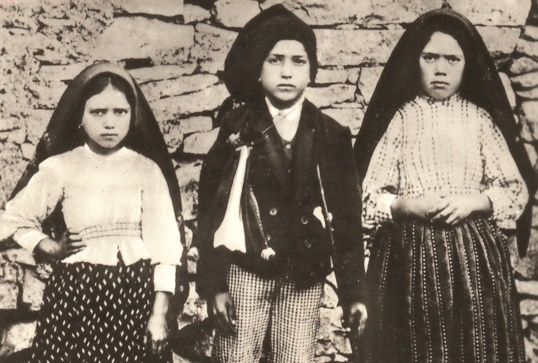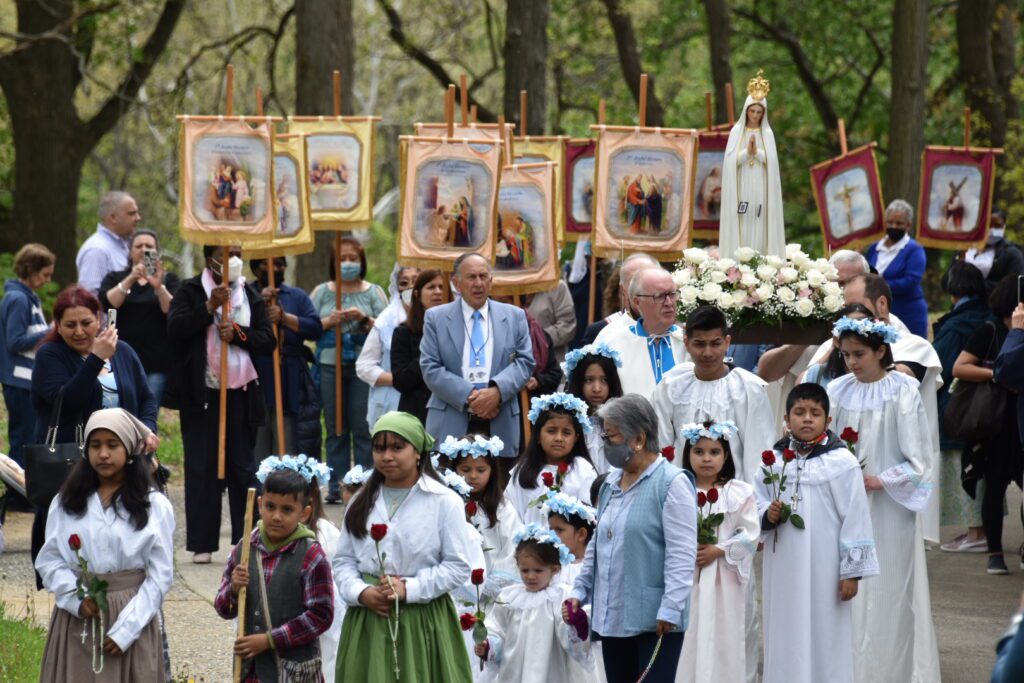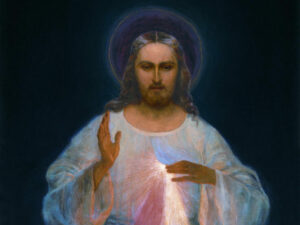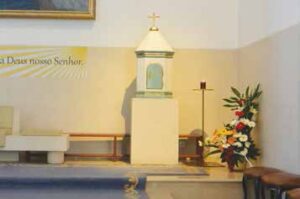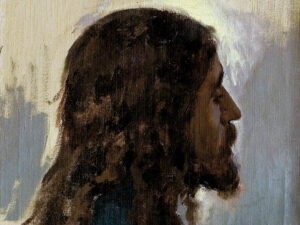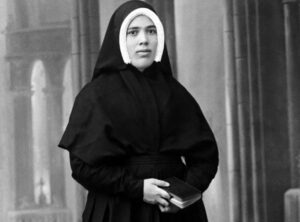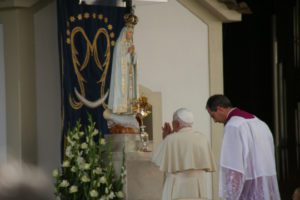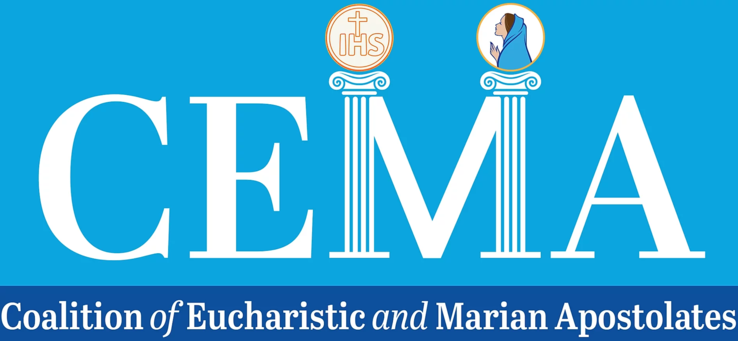by Patrick Sabat
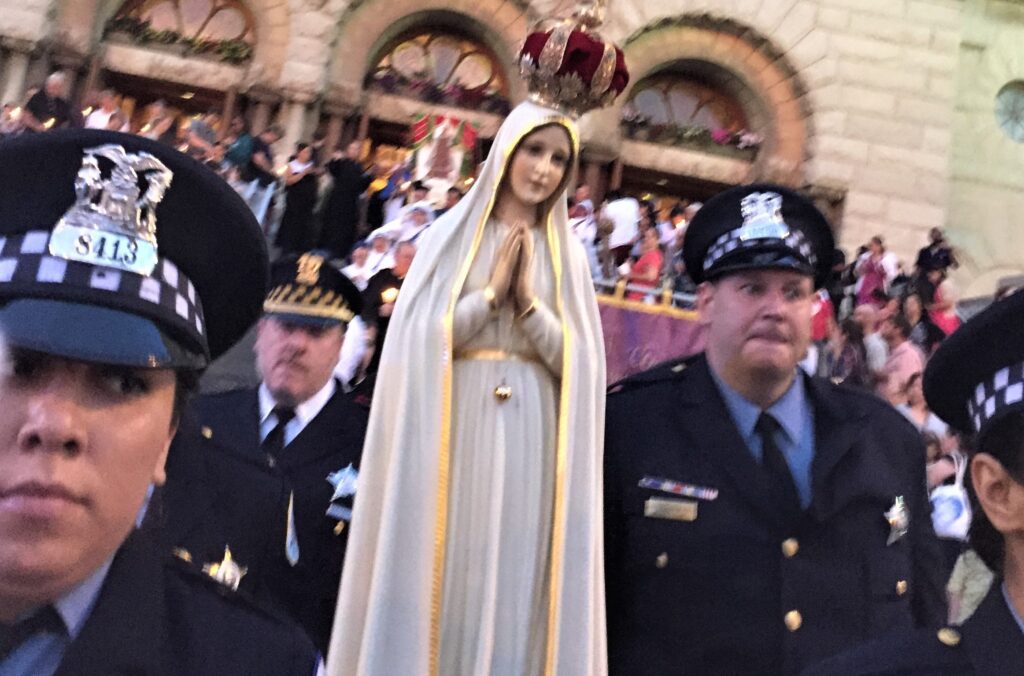
“Statues, by virtue of the blessing of a bishop or a priest, become for us ‘visual catechism’. We, by virtue of our baptism in Christ, become a ‘living catechism.’” – St. John Chrysostom
In 1947, the bishop of Fatima, Most Rev. Jose Correia da Silva, was very pleased when Mr. John Haffert requested, and then commissioned Jose Thedim to have the statue sculpted. Mr. Thedim spent time with Sister Lucia and carefully designed a new statue with a single tunic, a single mantle “brighter at the edge,” as she herself explained. “It would not be with a tassel, but with a golden globe hanging approximately over Our Lady’s heart. It should not be with many designs but only with a simple golden line at the edge, because the edge of Our Lady’s robe was more brilliant. And a great star shone at the hem of her tunic.”
This became the image that is famously called the International Pilgrim Virgin Statue, or simply, the “Pilgrim Virgin,” which Pope Pius XII later called “messenger of her royalty.”
One of the most widely used visual aids in the Catholic Church throughout its history is statues. This particular statue has been in hundreds of thousands of churches and has helped millions of people ‘learn’ about our faith; truly “catechizing” with the urgent message by the “New Star of Evangelization,” the greatest Catechist of all time—Our Blessed Mother. This statue is her beautiful representation, her visual aid!


Now, let us take a closer look how she appeared, what she looked like, and reflect upon them as to what it means to us as Christians:
Her Gesture and Countenance. Hands joined together with a seriousness and concern on her lovely face, saying, “Pray a great deal and make sacrifices for sinners.”
The Holy Rosary. In each apparition, from May to October 1917, Our Lady emphasized, “Pray the Rosary everyday” On Oct. 13, 1917, she said, “I am the Lady of the Rosary.”
The Scapular. The Virgin Mary appeared on Oct. 13, 1917, during the great miracle of the sun as Our Lady of Mount Carmel with Baby Jesus holding up the Scapular. Sister Lucia said, “She wants us to wear it every day. The Rosary and the Scapular are inseparable”
The Globe. Represents the earth under the maternal care and guidance of our Blessed Mother.
White Dress. Purity and simplicity of the Virgin Mother of God coming down from Heaven.
Holm Oak Tree. She stood on a tree, a scrubby bush that grows commonly in Portugal. It usually stands about one meter. In Scripture, a tree represents life. What Eve lost in paradise through the fruit of the tree, Mary, the new Eve has overcome; just like Jesus, the new Adam overcame death on a tree, giving us new life.
The Star. The most prominent interpretation is the Star of Queen Esther, a pre-figure of Mary, who interceded to the king to save the Jewish people from annihilation.
Her Eyes. There are no words to describe them. Really. We invite you to see it for yourself and experience the maternal love of Mary in her moral presence. When the bishop of Fatima blessed this statue, he prayed that Mary herself shall accompany it in all its travels. The eyes were never the same since this blessing.
The Cloud. The visionaries saw Our Lady coming down and rising up to heaven standing on a small “cloud of white mist.”
The Crown. Images of Our Lady of Fatima usually show her wearing a crown. However, the three children did not see a crown. The crown is an added adornment, first given to Fatima statues by Pope Pius XII.
Watch the podcast below with David Carollo and Patrick Sabat, who manages the Pilgrim Virgin Statue tours for the Blue Army. He discusses her history and travels throughout the world, and his personal experiences as the custodian of the statue for more than 20 years.


